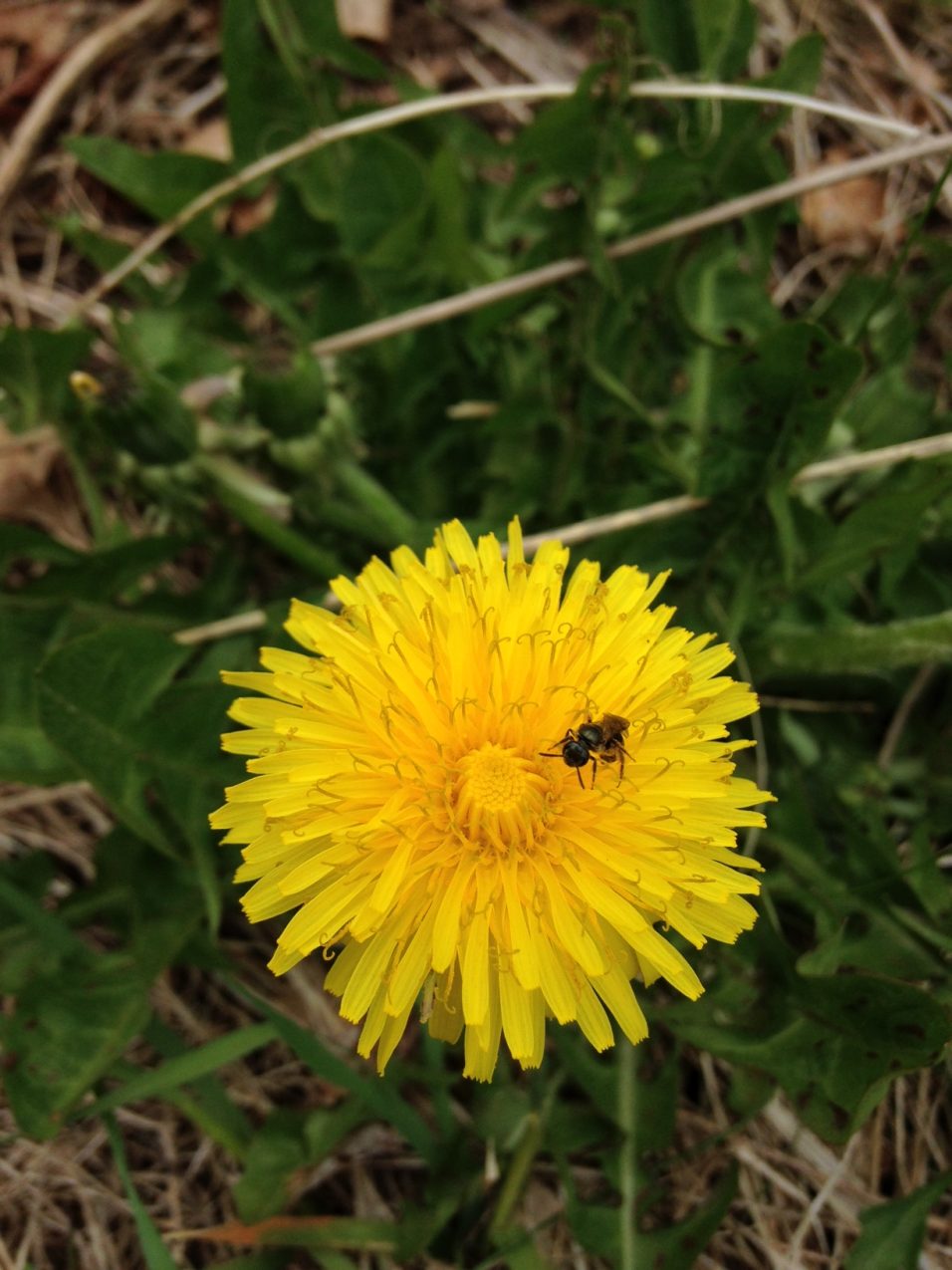What’s Growing at the Harriet Irving Botanical Gardens: Dandelion wine
By Melanie Priesnitz, Conservation Horticulturist
“Dandelion wine. The words were summer on the tongue. The wine was summer caught and stoppered…sealed away for opening on a January day with snow falling fast and the sun unseen for weeks…†–Ray Bradbury
This is the year I will find time to forage for yellow flowers and make dandelion wine. Dandelions to me are a herald of spring and all the glory that goes with the season. I cannot look at a field of dandelions without feeling youthful joy. Memories abound from seeing the ‘wishes’ or seed heads flying through the air. Many a childhood hour was spent helping the seeds find the wind and chasing their white fluffy wings through the air. When I became a gardener, I was saddened to learn how many of my kind strongly dislike when dandelions appear in the soil. It’s hard to imagine how anything so useful and beautiful could be disliked by so many.
Taraxacarum officinale, commonly known as dandelion in English, is native to Europe and was thought to be intentionally introduced to North America sometime in the 1600s. Dandelions have a long history of being used for food and medicine. According to fossil records, dandelions have been on this planet for at least 30 million years and have a wide distribution around the world. So it seems unlikely, no matter how hard some gardeners may try, that they will be eradicated, so we might as well learn to love them!
The French common name pissenlit speaks to the plant’s diuretic properties. The translation of pissenlit means to pee the bed! Dandelions have long been used to support a wide range of conditions including urinary dysfunction, gallstones, intestinal gas, eczema, and joint pain. Dandelion is said to be useful as a blood tonic, a diuretic, and a digestive tonic. It can also be used to support liver function and detoxification. The roots and leaves of dandelions contain Vitamins A, B C, and K, as well as minerals including magnesium, zinc, potassium, iron, and calcium. Spring leaves are delicious to eat as a salad green (the earlier they’re picked the tastier they are). The flowerheads are great for cookies and fritters, and my favourite, wine.
There are a myriad of recipes for dandelion foods and wines available in books and on the internet. The dandelion wine recipe that I plan to try is from the great old book The Wild Edible by Berglund and Bolsby, and opens like this: “It is important that the flowers be picked in sunshine at midday when they are fully opened and that the making of the wine should be started immediately.â€
So get outside and start collecting those beautiful yellow flowers now gracing our fields and lawns all across the Annapolis Valley. Dandelions are the only flowers that we allow visitors to pick at the Botanical Gardens, so if they are growing on our lawns or pathways please help yourself!
